#aarne... OUT!
Explore tagged Tumblr posts
Text
Henri knocks out Aarne


7 notes
·
View notes
Text
— FAMILIAR STRANGER | reo mikage x fem reader
extra: clearly inspired by the song "undressed" by sombr, specifically the lines "i don't want the children of another man to have the eyes of the girl i won't forget" ; words: 0.9k



at the age of twenty-three, REO MIKAGE finally felt he could call himself satisfied: he was playing the world cup with excellent results, his troubled relationship with his father was finally healing and, above all, his psychologist had told him that, in his opinion, there was no longer any reason to continue the sessions. after four years from the first time, there was no reason to see each other anymore because he was finally healed. REO MIKAGE was finally happy again. a hard aarned happiness, arrived after sacrifices and a lot of tears, but which he finally held close to himself with a certain pride, maybe soon even close to a cup he aspired to since he was a teen
happiness comes as it goes, with a bastard speed. but he didn't think it would go away so soon, for a simple little girl he didn't even know "Did you see her? It's Fukodaki's daughter"
Fukodaki had been on the team for so little time that he didn't even remember his own face, yet his daughter's was so familiar. turning around, Nagi is still standing next to him "Huh? He has a daughter?" he asks puzzled, maybe even a little worried for some unknown reason. Nagi nods "Of course. It's that little girl. His wife is there too. Look" he says, lazily pointing to a woman from behind, her shoulders pressed against her husband's arm. breath catches in his throat
he could live another hundred lives but he would never confuse the back that accompanied him for so long in his life, the one he massaged, hugged, held, cried on. not when that cluster of star shaped moles that he kissed so much in the past appears on the back of the woman. years of therapy suddenly seem pointless when the woman turns slightly, just enough to be seen in profile, enough to kill him on the spot
a small hand pulls his shirt, forcing him to lower his gaze: a pair of eyes he has already known in the past stare at him curiously, eyes that seem to speak to him, to give him now answers he needed in the past. eyes he knows he would kill for, even now. eyes that haunted him for years even in the worst and best moments of his life. the worst without you
"your hair is long enough to wear in a ponytail" the little voice says, and REO MIKAGE swallows. his lips open, but nothing comes out. even though he wants to speak, even though he has been through years of therapy just to get over his habit of selective mutism when he is shocked, no sound comes out. the little girl smiles, hugging his hand "the ponytails are more comfortable. the hair doesn't go in front of your eyes and you can show the world your face" he says, and the more she smiles with his toothless smile, the more he feels like dying
the same words you said to him years ago, when being together and being a couple wasn't a problem. he who had problems with his face, which disgusted him because everyone told him it was the face of a daddy's boy, of a privileged and undeserved person. you who changed his perspective just by being yourself. you who with the simple power of loving him made him the most powerful weapon in the world but at the same time the most depressed
you, who loving you was so easy, almost a duty, because it was impossible that no one wanted you when you were literally the most perfect person in the world, at least for him, the perfect person for him. you, who by loving him showed him how beautiful it can be to finally see the world in color, no longer being the one who gives but rather the one who receives. you who were his first kiss, his first time, the first woman he introduced to his parents, the first one he seriously argued with, the first one who simply deserved to be all the "first" things, because for him it seemed right that way
you, the first one with whom he had the courage to talk about family, to explain to you how much he would have liked to make you his wife one day and have a family, possibly a daughter. you, who imagined with him a little girl just like you, with your same eyes but his character and proud spirit
you, who at nineteen chose to leave rather than stay with him. REO MIKAGE, who never condemned you for doing so, because he knows more than anyone how much his problems make an unmanageable situation in a couple, problems such as jealousy, distrust in the partner, anxiety. things he always had but couldn't get rid of even with you, who never gave him the chance to worry, never once in five years of relationship
you, who have moved on, while he, even though he spent money trying to do so, has not succeeded in doing so yet
he who simply knows that appearing to have accepted the thing is the solution that makes him less desperate. he who simply knows that after you he will no longer be able to love, because you have been everything and will always be everything, even if the little girl in front of him isn't the one you promised yourself you'd love when you were adults

✶ 𝐌𝐘 𝐌𝐀𝐒𝐓𝐄𝐑𝐋𝐈𝐒𝐓 ; take a look, trust me!
#blue lock#bllk x reader#blue lock x reader#bllk x female reader#bllk x y/n#bllk x you#bllk#blue lock x female reader#blue lock x y/n#blue lock x you#bluelock x you#bluelock x reader#bluelock manga#blue lock manga#blue lock anime#mikage reo#mikage reo x reader#mikage reo x you#mikage reo x y/n#reo mikage#reo mikage x reader#reo mikage x you#reo mikage x y/n#blue lock reo#reo x reader#reo x you#reo x y/n#bllk reo#blue lock reo mikage#reo mikage blue lock
112 notes
·
View notes
Text
@mielwriting

re this post bc it's too long for me to fit in a normal tumblr reply:
I'd love to! (Most, but not all) western depictions of dragons envision them as monsters -- either good or evil. Many legends paint them as greedy and jealous. They live underneath mountains and hoard gold. They take princesses and lock them in a tower. A hero eventually comes to slay the beast. This is, of course, an overgeneralization because there are also a few tales in which they are wise and lend advice, and there are a few rare exceptions in modern tales where dragons are as intelligent as humans - or more intelligent than humans, but they are also just as often depicted as like...basically a really intelligent animal. They're a type of monster. Chiefly: they're aggressive, jealous, and possessive.
The western mind views lions as symbols of power and strength - "the king of beasts". We actually can see the direct dichotomy in the western mind between dragons and lions in Yvain, the Knight of the Lion, where the hero rescues a lion from a great serpent. The lion becomes his loyal companion, and is associated with knightly virtue. They're associated with kings and royalty (Richard the Lionheart, Robert III - the Lion of Saxony), and the word "lionize" means to give someone approval and treat them with great importance. In The Twelve Huntsmen, a lion appears as advisor to the king. In Aarne-Thompson-Uther's index, we see over and over again lions as a hero's helper or a protagonist in its own right.
So, by contrast, the Chinese dragon is one of the auspicious beasts. Historically, they were a symbol of the emperor. They represent prosperity, wisdom, and power, associated with rivers, the sky, and rain, and are benevolent, kind beasts who foster harmony. In fact, the disparity is so immense that in 2008, the Chinese government decided against using a dragon as the Olympic team's mascot because of how dragons are viewed in the west and opted for a more 'friendly' symbol instead.
This is why so many fanon depictions of Zhongli drive me crazy. He gets slapped with so many western dragon traits (jealous, possessive of his partner because oh that's just how dragons are, a general lack of emotional intelligence -- and the idea that he was a bloodthirsty maniac during the archon war before Guizhong 'tamed' him, loves to live beneath a mountain or deep underground). Granted, not all fics are like this, but most fics use at least one of these ideas even though they're in direct conflict with what the game presents to us. Rex Lapis, during and before the archon war, was a kind and benevolent ruler who -- when his people had no houses -- crafted houses for them out of pure gold. He "wished not for dominion", but couldn't stand by and watch people suffer. He doesn't like to fight, but he's good at it and he's strong, so he feels an inherent sense of duty to protect his people.
His character stories are quite clear that though he has never been poor himself, he understands what it means to be poor. He's empathetic, thoughtful, and generous to a fault. That's in his character short where, after hearing that the item was a family heirloom pawned out of necessity, he buys back that jewelry from the pawn shop vendor and quietly returns it to its owner with some living expenses on the side. Prior to faking his death, he personally ran Liyue alongside the Qixing, to the point that both Keqing and Ganyu have expressed how much more intense their workload has become now that he's not doing everything. He's warm, wise, kind, and treats his friends with great respect. So yeah it came as a shock to me and still really bothers me how poorly he is portrayed in a lot of fics -- as this emotionally unintelligent, oblivious, bad-at-feelings hunk. Especially when he's not even actually a dragon. He just chose to look part dragon, part qilin, in an effort to communicate his nature to his people with symbols they would understand.
Anyway I could talk about him for way too long, thank you for coming to my tedtalk. I just think that if English-speaking writers took a second to consider their own bias and look up some information about Chinese dragons, they'd write him very differently.
#zhongli#hi you activated my trap card#<3#thank you!#if i sound salty it's because i am#i love zhongli so much and it's so hard to find good fics for him
38 notes
·
View notes
Text
I HAVE SORTED OUT A WAY TO BRING AN OLD BEANSTALKED CHARACTER BACK
THIS IS FUCKIN GREAT - THE AARNE-THOMPSON-UTHER INDEX HAS COME IN CLUTCH FOR ME YET AGAIN
For context: I had one Beanstalked character I REALLY wanted to include in the comic for ages who was Bookmarked with Aladdin...but because I scrapped featuring the 1001 night tales due to worrying about potential orientalism (bc I KNOW I will fumble) I wrote them out of the story
BUT I did some brief digging and found a fairy tale (or two) that contain basically the same stuff I wanted out of Aladdin.
SO I CAN BRING AN OLD CHARACTER BACK AND HAVE EXTRA FUN DESIGNING STUFF FOR THEM
ANOTHER ROCKY W
29 notes
·
View notes
Text
convinced that i have misspelled 'aaron' in every possible way by now.
aaaron. aron. aeron. eeron. earon. aaaaaaaaaaaaaaaaaaaaaaaaaron (blanked out whilst typing). irin. aran. aaran. naran. aearon. eaaron. aarn. infinite possibilities and i have achieved them all.
38 notes
·
View notes
Text
Diamonds, Toads, and Dark Magical Girls
According to Bill Ellis in "The Fairy-Telling Craft of Princess Tutu: Meta-Commentary and the Folkloresque," the fairy tale of Cinderella can be seen as one of the earliest examples of the transformation sequences/henshin seen in magical girl anime, particularly in how the title character is given items that help her achieve a goal, usually given to her by a magical being (her mother's spirit in a tree, a fairy godmother, etc.).
Thinking again about the connection between magical girls and fairy tales--even if they aren't as meta as Tutu, many magical girls do use imagery and ideas from European fairy tales (Sailor Moon alone has references to Hans Christian Andersen and Charles Perrault)--I wondered what other character types from the genre may have some precedent in fairy tales. Then I started thinking about the Dark Magical Girl character.
Not every magical girl story has a Dark Magical Girl, but they do crop up in a lot of works. To name a few, there's Fate Testarossa from Magical Girl Lyrical Nanoha, Homura Akemi from Puella Magi Madoka Magica, Rue/Kraehe from Princess Tutu, and countless others that would be too numerous to name. In general they tend to be more cynical, darker counterparts to the main protagonists, who tend to come from relatively more stable environments. Whatever magic they possess also may be more sinister, at least initially.
Tying in somewhat to the story of Cinderella is the Aarne-Thompson-Uther Index fairy tale type "The Kind and Unkind Girls" (ATU 480). Many of the stories of this type involve a rivalry between two stepsisters, one being favored by the stepmother due to being the latter's biological daughter. The general idea in most versions of the tale is that both girls encounter a magical being at separate points in time. The kind girl helps the magical being in some way, at which point the magical being gives her a magical ability or magical presents. Meanwhile, the unkind girl refuses to help the magical being and is cursed in some fashion, or, worse, killed. The kind girl meanwhile usually ends up marrying a prince, or a similar character. One of the more popular versions of this story, "Diamonds and Toads," has the kind girl gain the ability to have a jewel or flower fall from her mouth when she speaks, while the unkind girl is cursed to have toads and snakes fall from hers. And while the kind girl does marry a prince, the unkind one is kicked out of her house and dies alone in the woods. (Insert something about Revolutionary Girl Utena's comment about how a girl who cannot become a princess is doomed to be a witch.)
Typically in these fairy tales, the unkind girl is never shown to be a real threat to the kind one; the ultimate threat is the stepmother, who uses her daughter as a means to an end. In contrast, Dark Magical Girls tend to have, well, magic that helps them attack the magical girl protagonist. In this regard, they're the Heavy in the plot, while the witch/mother-like figure/real enemy waits in the background (as is the case in a lot of magical girl shows--the Raven and Rue, Precia and Fate, Fine and Chris in Symphogear etc.). Sometimes the Dark Magical Girl will be a major threat, though--like the Princess of Disaster in Pretear (who is loosely-inspired by the Evil Queen in Snow White).
In The Uses of Enchantment: The Meaning and Importance of Fairy Tales (1976), Bruno Bettelheim argues that the stepmother as a character is a way for children to process the negative traits of their own mothers, while still idealizing the good qualities of them. With that in mind, the unkind sister and the Dark Magical Girl can be viewed as a way of processing/externalizing the negative traits that a girl can have, being cruel, rebellious, and uncaring. They also embody their fears, too--the fear of being alone, rejected, and doomed to fail.
Of course, nowadays, Dark Magical Girls have a tendency to be redeemed and reconcile with/befriend the main magical girl, something the kind and unkind girls never seem to do in the fairy tales. Maybe it's just emblematic of society deciding that killing a girl off for being a little rude is a bit unfair. She's just a kid trying to find her place in the world, too, after all.
#magical girl#magical girl lyrical nanoha#puella magi madoka magica#princess tutu#senki zesshou symphogear#dark magical girl#fate testarossa#homura akemi#rue kuroha#princess kraehe#chris yukine#cinderella#diamonds and toads#kind and unkind girls#fairy tales#hans christian andersen#brothers grimm#charles perrault#bruno bettelheim#the uses of enchantment#random thoughts#text#read more
121 notes
·
View notes
Text
I imagine that Coruscant has a vertically stratified society, and I think a lot of people clue into this subconsciously, making the people at the top very rich, and the people in the lower levels very poor. However. If you look at the way Coruscant is actually portrayed, there are plenty of poor people on the surface, so I think each level is individually stratified further. So there are upper level rich, upper level average, and upper level poor, mid-level rich, mid-level average, and mid-level poor, lower level rich, lower level average, and lower level poor. So each subset of Coruscant's stratified society is internally divided as well.
Now, I will admit that this is in part inspired by my love of underground cities. You know how everyone has a YA dystopian series they loved as a kid? Mines The City of Ember. Does anyone else remember that or is it just me? In any case, I don't want to take him out of the underground simply because I think underground cities are cool, so I AM biased, but I think I can make it work.
I think he's fits best in the mid-level rich category. So he is wealthy. Like, wealthy, wealthy. But not as wealthy as the upper level rich class that his family is desperate to reach. So, morals? None. Nothing that will stop them from reaching their desired social class. I'm giving them all Estonian names because I will die on the hill that the Kallus' are Estonian. So Maarja and Aarne Kallus have two children, Alexsandr and Tatjana. Alexsandr is their oldest and yay! Their first born is a son which is good because rigidly enforced gender roles, I don’t fuckin know, don't ask me what that's about. The problem is, their son is a troublesome child.
First of all, I do think that Kallus is autistic, and that makes being born into a family where he has to small talk and network his way up a social ladder a fucking nightmare for everyone involved, ESPECIALLY for this young neurodivergent child who has little to no support. So he lashes out and gets into trouble outside the home. He's out with friends getting into trouble and his parents enable his bad behavior by paying off damages and legal fees that he accumulates through the years. Boys will be boys, after all. So he never has to face the music. No one's ever looked at him and said 'no, this is your mess. You clean it up.'
He's also gay and I imagine his parents are constantly trying to find good marriage matches for their children - good as in, will make us look better to the uber richy riches, so they're trying to marry UP. And Sasha is proving difficult because this boy cannot sit through a date with these rich girls his parents need him to marry for their sake, but he keeps flirting with their brothers. And his parents absolutely know what's up but they put their foot down and shove this already drowning boy further underwater.
His antics are eventually too much for them - and he's making them look bad - so he's shipped off to military school, where he immediately almost fails out - if it weren't for Jovan.
His parents finally lay off a bit, because, for the first time, he's succeeding at something and he throws himself into his training because people are finally proud of him.
His sister, underestimated at first, ends up their parents golden child. She loves to be social, she doesn't mind dating rich, she's ambitious, she's everything their parents wanted Alexsandr to be. Tatjana works in fashion, co-opting alternative styles to make a name for herself, without really understanding the underlying politics associated with those alternative styles but hey, at least she's fashionable. And as we know, popular fashion and fascism go hand-in-hand. She dresses some of the most famous upper level richy riches and makes a name for herself among them, exactly what her parents wanted and she eventually marries the wealthy son of weapons contractors - who are absolutely in bed with the Empire. The Kallus' are more than happy to align themselves with Imperial aristocracy if it means socially advancing. The haughty attitudes and polished accents are all part of the game. They stop speaking their native language at home - some kind of Old Coruscanti (Estonian) that no one speaks anymore, anyway, so who really cares? (There is in fact a thriving community that continues to speak their language but they throw them all away so they can conform to Imperial social standards, instead of risking standing out). And they finally have what they want. A favorite daughter who married into the exact social class she was supposed to, elevating her parents ambitions, and their son, who was worth something after all, and is one of the highest ranked members of the ISB.
Until Sasha finally snaps, abandoning the Empire for the Rebellion, and the Kallus' carefully curated image crumbles around them.
#Tati has colored hair and tattoos and is like the anti-Sabine#so when Kallus gets to the rebellion and there's this outspoken social girl with colorful hair#he's see's his sister in her#and if it weren't for the Empire Sabine and Tati probably would get along#rich kid kallus#alexsandr kallus#kallus#agent kallus#rebel kallus#sw rebels
15 notes
·
View notes
Note
Ooh what'a the lindworm story (under originals)?
this is a take on aarne-thompson 433b (king lindworm / the prince as serpent) that I started in 2020 and never quite figured out the end of -- it's primarily asking 'how does it feel to have to suddenly be a person when you have been a very big snake your whole life and did not expect this to change?'
To begin with, it is his own hands — such strange things, hands, like having so many more tongues with which to touch and hold, save for that they follow form rather than scent — that touch his skin, assay it for what it is and is not. His skin is thin, soft. The underside of his forearm particularly is tender and smooth and delicate. It is so easily cut, so easily bruised, as he can tell from the welts that still lie stinging across his back and arms. Where is all his armor? What must he do to earn it back again?
I've decided it's worth picking back up again, but am still trying to find out where it wants to end up.
#em writes stuff#it is also about gender. there are very few things that I write that are not in some way about gender.
13 notes
·
View notes
Text
Round 1 - Set 51


The saint and the mourning women 1941 by Aarne Niinivirta
Description: sketch showing a woman laying her head in the lap of a saint, the womans face is blank, she is kneeing on the floor, the saint looks down on her. The saint wears black robes, the woman wears a red dress. There seems to be a third person next to the woman or it may be a first attemp at her.
Propaganda: the sketch with the empty face and the limp arms and overall semi transparentness compared with the more worked out saint really gives me something that most likely wasn't intended at all.
Propaganda 2: I love how the non saintly woman looks otherworldly in her half finished state while the saint looks so much more grounded with his face being there and the wrinkles in his clothes, it makes me think as if she is slipping away on him, like a feeling of helplessly, he can't save her he can only be with her, for her pain and grief.
The saint and the mourning women 1941 by Aarne Niinivirta. The art is 176 × 150 cm. The art is in the Finnish National Gallery (link to the art here). The art was photographed by Asko Penna.
Erik XIV and Karin Månsdotter, 1864 by Erik Johan Löfgren
Description: panting showing Erik kneeing next to Karin, he has his head laying in her lap and his eyes closed, she looks up, they are outside behind them is an oak tree.
No Propaganda has been submitted.
Erik XIV and Karin Månsdotter, 1864 by Erik Johan Löfgren. Oil on canvas. The art is 223 × 164,5 cm. The art is in the Finnish National Gallery (link to the art here). The art was photographed by Hannu Pakarinen.
#image description in alt#Aarne Niinivirta#Erik Johan Löfgren#1940s#1860s#finnish art#finnish artist#19th century#20th century#polls#round one#painting#oil painting
9 notes
·
View notes
Text
The fairytale world of The Witcher
The Witcher is first and foremost a work of fantasy and as such, of course, when looking at the inspirations of Sapkowski, we have to look at fantasy works. For example the early worldbuilding and characters of The Witcher world bear the heavy mark of D&D (Jaskier is a cliche D&D Bard, the classification of elemental genies is traight out of D&D, there's the handlings of "druids", etc...), while the main character clearly has parallels with Moorcock's Elric (white-haired wanderer-warrior who knows magic and uses elixirs, drugs to maintain his fighting abilities, philosophizes a lot about the ending of an age and the future of humanity and the doom he is condemned to). However, The Witcher is also, primarily, a fairytale work.
[EDIT: So I am used to call Jaskier "Jaskier" but in English he is called Dandelion apparently... So know that when I talk of Jaskier, I'm talking about Dandelion]
And I am not just saying that in the way that almost all major fantasy works are inspired by fairytales, no. It tends to be lost on people due to how they usually know derived incarnations of this series, but The Witcher stories started out as full on fairytale rewrites. More precisely: subversives parodies of fairytales using dark humor, a gritty tone proper to dark fantasy, and fantasy tropes in general mixed with some folklore sprinkled here and there.
Of all the Witcher books, the first two are the ones where this logic is on full display, forming the core of each tale. If you ever missed it, here is a little list of the fairytale references in them. [Note: I am using the French translation so I might miss some stuff or write them strangely for those used to the English translations or the original Polish]
Book 1: The Last Wish
Many people might be surprised to learn that the first story, "The Witcher", is actually the parody of a specific fairytale. It might seem to be just a take on the vampire as it appears in Eastern European folklore, but in truth Sapkowski rewrote a tale that you probably do not know. Why? Because none of the "great" collectors or writers have it: it doesn't appear in Andersen, Grimm, Perrault, Aulnoy, Basile, Straparola, or whoever else you might name. It is however a fully classified fairytale-type that is VERY present and popular in Eastern Europe, hence why it appears in The Witcher: the Aarne-Thompson classified it as type 307, "The Princess in the Shroud/The Princess in the Coffin". The closest thing you'll find to a version of this in the "classical" corpus is a Danish fairytale that Andrew Lang placed in his Pink Fairy Book: The Princess in the Chest (and Paul Delarue centered his own French-specific classification of this type around the story "La Ramée and the Phantom"). In interviews the author explained he took "a Polish fairytale" where "the royal daughter transformed into a monster because of the incest of her parents, as a punishment", but I don't known which story prcisely he used.
The second story, A Grain of Truth, is much more obvious, as it is a farcical take on Beauty and the Beast (with some flavors of Undine in it).
The third story, The Lesser Evil, introduces the Curse of the Black Sun, which is the in-universe existence for the "maidens in the tower" and all these princesses that princes have to rescue from doorless buildings (interwoven with the figure of Lilith). The cases of Fialka and Bernika are obviously inspired by the tale of Rapunzel. However the real character of the story, Renfri, is The Witcher's dark take on Snow-White.
A Question of Price is a large mix. The storyline is actually a retelling of Hans My Hedgehog, but exploring the fairytale trope that in Witcher terms is called "the law of surprise" - the episode of someone in need striking a deal with a supernatural being for help, and unwillingly selling away their children (it is most famously illustrated by Grimm's "The Girl without Hands"). One of the "historical" illustrations of this trope in the Witcher universe is a version of Rumplestiltskin (queen Metinna and Rumplestelt). There's also references to great heroes that served as an example of such "fate-striken children" sold to a mysterious stranger - but if there's a cultural nod there, I didn't get it. Finally several fairytales are referred during the discussions: Baba-Yaga and Cinderella are briefly said to exist while "A Question of Price" takes place. And Pavetta's magic is not related to fairytales, but rather to the strange cultural motif of "puberty-induced or virginity-linked psychic powers" found from poltergeists to Carrie.
The fifth story, The Edge of the World, is the only one of the collection not dealing with fairytales. It is rather a tale mixing on one side rural folklore, farming superstitions, field spirits and harvest gods, with on the other an exploration of the fantasy trope of "disappearing elves".
The sixth story, The Last Wish, is all about wish-granting genies, with a strong influence from the tale "The Fisherman and the Jinni".
Book 2: Sword of Destiny
The first story, The Bounds of Reason, is not deconstructing a fairytale per se, but rather the entire myth of the dragon-slaying. You find references to many elements of said myth: "You must kill the dragon to claim the princess", the saint-knight figure interpreting dragons as pure evil, the band of dwarves famed for slaying a dragon seem to me a nod to The Hobbit. But mainly, we see that the tale begins as a subversion/expansion on the legend of Smok Wawelski, the Dragon of Wawel, known to some as the Dragon of Cracovia. There's also a mention of bridge-trolls (The Three Billy Goats Gruff).
The second story, A Shard of Ice, is not linked to fairytales per se, but uses a motif taken directly from The Snow Queen (and in-universe, the fairytale of the Snow Queen is said to be an embellished version of the Wild Hunt).
The third story, Eternal Flame, has no fairytale theme, it is just a pure fantasy story.
The fourth story, A Little Sacrifice, opens and closes on the in-universe love story that caused the story of The Little Mermaid to exist (turns out it is a ballad by Jaskier, the actual romance went much happier, though not smoother). Also, the under-sea city is explicitely compared to the city of Ys, which is a big legend of France.
With the fifth story, Sword of Destiny, we go back into a lot of fairytale nods (it helps that it is a direct sequel to "A Question of Price"). The "Last Forest" of Brokelion is a nod to Brocéliande, the legendary forest of Arthurian legends. Geralt tells Ciri the fable of the Fox and the Cat. Freixenet turns out to have been the inspiration for the fairytale of "The Wild Swans", which in-universe is a ridiculous exaggeration and mistelling of what truly happened.
The sixth story, "Something More", only is "fairytale-y" as it reuses the saw "surprise-child/law of destiny" elements already prepared and presented by A Question of Price and Sword of Destiny.
Afterward, from what I understood (I haven't read the third book onward), the fairytale elements are dropped to rather put focus on the exploration of the fantasy and folkloric elements - but it is always useful to know that it started out as basically a dark humor /dark fantasy take on fairytales.
15 notes
·
View notes
Text
Aarne knocks out Johannes


3 notes
·
View notes
Note
Do you think that Rey's story (excluding episode 9 'cause that was a shitshow) could be interpreted as a Cinderella/Ash girl story?
I hope you realize asking me this is like throwing chum to a shark 😈. But the short answer is yes, to a point.
The long answer is more complicated, so to begin with, let's consult the Cinderella bible:
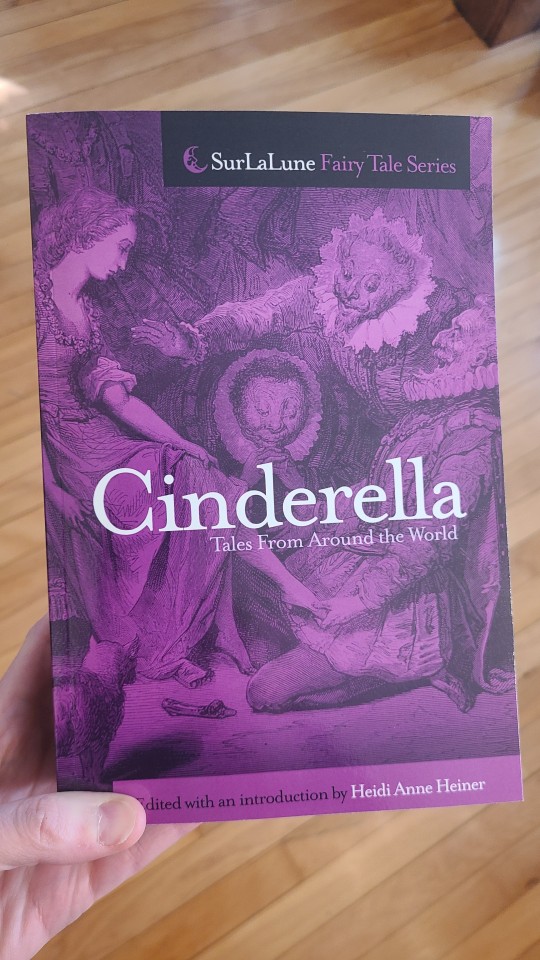
According to the Aarne Thompson Uther Index, there are five primary motifs to a Cinderella tale:
Persecuted heroine, usually by family
Help or helper, usually magic
Meeting the prince, usually with true identity disguised
Identification or penetration of disguise, usually by means of an object
Marriage to the prince
Rey is abandoned by her family, which is a form of persecution, and harassed by the inhabitants of Jakku like Unkar Plutt. Thus she clearly fulfills the first item.
As for meeting a helper, there are several for her, including Han Solo, Maz, Luke, and Leia. Any or all of these may be considered fairy godparents in the way that they offer her wisdom and material help. Further, except for Maz, they all die in the course of the story, which is consistent with many Cinderella tales in which the helper dies and their bones continue to offer wisdom and comfort to the heroine.
Next, meeting the prince. I mean
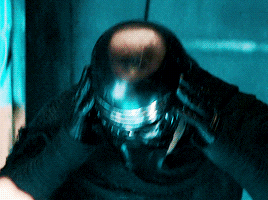
To the extent that Rey is "in disguise' here, it would be the extent of her force powers, her destiny as Ben Solo's dyad mate, and her role as the heir apparent to the Jedi (chosen by the Force to wield the legacy saber), all of which are obscured from Kylo Ren when he discovers her in the forest. Further, she is grimy and covered in desert sand, similar to how Cinderella is smeared with ashes that hide her true beauty.
So now an object penetrates the disguise. This is obviously the Skywalker lightsaber, which reveals Rey to be everything listed above, especially when she calls it to her on Starkiller Base, and again when she wields it on Ahch-to.
And lastly, marriage to the prince. As many others have pointed out over the years, Rey and Ben have almost too many symbolic marriages to count in the course of the sequel trilogy. They're extremely married, the Force said so.
BUT WAIT! Go back and look at that list again. Who ELSE fits all those criteria?

It's our boy! Consider:
He is indeed persecuted by family, most notably when Luke momentarily considers killing him.
Ben's helpers are both dark and light, as Snoke/Palpatine guide him in the dark while Luke guides him in the light (poorly). But note again what I said above about the bones of the mentor continuing to offer guidance and comfort after their death. Who should appear at Ben's lowest hour but his departed father, Han Solo? With a message of love, acceptance, and encouragement, Han's memory (because in fairy tales, bones contain memory) encourages Ben to at last cast off his beastly skin and become who he always was.
Next, meeting the prince/ss in disguise. He's wearing a literal mask when he meets Rey, so yeah.
An object penetrates the disguise? Rey slashed his face with the legacy saber, thus symbolically peeling away his mask. And I've argued before that the stabbing in TROS (which I still HATE, btw) is another cutting or burning away of the beastly skin.
And lastly, marriage to the prince/ss. As previously stated, that happened. Many times.
So yes, the Sequel Trilogy can definitely be considered a Cinderella story, with but one glaring issue: Cinderella's husband usually doesn't die at the end. But that's another topic that's been done to death, so let's all just read some more fanfic and forget about it. 👑 Thank you for the ask, this was fun!
#reylo#reylo meta#star wars#star wars meta#sw meta#star wars sequel trilogy#sequel trilogy#sequel trilogy meta#sw sequels#rey x ben#rey of jakku#ben solo#kylo ren#cinderella#aschenputtel#fairy tale#fairy tale meta#folktales#folktale types#folktale motifs#atu 510#aarne thompson uther#han solo#luke skywalker#leia organa#maz kanata#fairy godmother#my meta
105 notes
·
View notes
Text
Incident in Tattarisuo
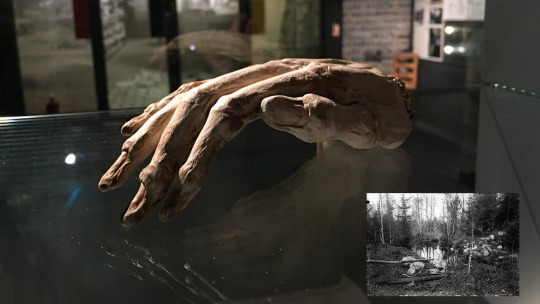
On August 19, 1930, a normal school trip turned into a nightmare. In Malmi, then a rural municipality of Helsinki, a 14-year-old schoolboy found the severed hand of a woman in the Tattarisuo spring. The police were astonished by the discovery, but without further evidence, the case was quickly forgotten.
A year later, on September 18, 1931, the same source revealed its dark secret: several severed hands, feet, fingers, hair – and a head. Now there was no longer any doubt that something terrible was happening. The media seized on the incident, and the whole country held its breath. Evil was moving in the Helsinki night. The police investigation was wandering in the dark.

Many who should never have been suspected were suspected. At the center of the scandal were the caretaker of the Harju morgue, the leader of the esoteric Rosicrucian organization Pekka Ervast, and even the Freemasons. Lieutenant Colonel Paavo Susitaipale loudly accused the Freemasons and other secret societies, and as a result, the Freemasons were expelled from the Officers' Union – although their innocence was eventually proven. The investigation finally took a turn when it emerged that a small group practicing black magic was behind the acts.
They had dug up body parts from open mass graves in the Malmi cemetery – so-called line graves – and used them in their rituals at the Tattarisuo spring. The group’s goal was to connect with the spirit world and receive supernatural help, including healing from illnesses and the return of lost property.
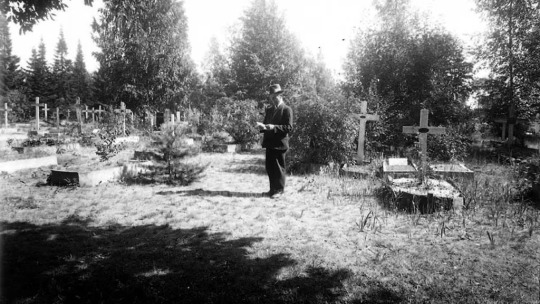
The group was not unknown to the locals. The leader was revealed to be the driver Vilho Kallio, known as “Witch Kallio,” who believed that the water from the Tattarisuo spring had healing powers from the body parts preserved there. Also involved were the dock worker Ville Edvard Saari and Johan Ilmari Hedman, a deep believer in mysticism, whose mother hoped to have her son recognized in court as the illegitimate child of the late Dr. Parviainen – and thus share in the millions of euros inheritance.
Even the cider factory was not spared from suspicion. The Ajan Sana magazine ran a striking headline: "The mystery of the buckwheat swamp is solved - the traces lead to the cider factory." Although the suspicions turned out to be unfounded and the magazine was fined, a saying was born that still lives on: "The traces lead to the cider factory." Behind the mutilations was a surprising figure: seamstress Ida Widen, who claimed to receive instructions through visions and letters appearing on the wall. She read "secret messages" that instructed how body parts should be cut.
Widen and Kallio are also said to have prayed according to the instructions of the Black Bible at the Malmi and Lapinlahti cemeteries – hoping that the spirits would reveal to them the secrets of the lost money and the success of the trial. The dark saga of Tattarisuo culminated in September 1932, when the Helsinki Parish Court issued its verdict. Noita-Kallio received a sentence of 2 years and 4 months in prison, Ville E. Saari 3 years, and Ida Widen was sentenced to 3 years for incitement to mutilation and false reporting. The court found that their actions were not murders – but attempts at witchcraft that turned into sacrilege. The case also received widespread attention in literature.
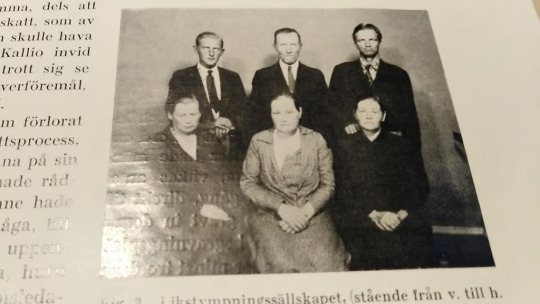
The first work of thriller writer Aarne Haapakoski, The Mystery of the Black Swamp, was published in 1931. In 2015, Aki Ollikainen discussed the events in his novel The Black Fairy Tale. Ethnographer Vilho Rikkonen, in turn, published a study entitled "The Magic of the Dead in the Cause of the Horrors", discussing the case of the Tattari Swamp as an example of the power of superstition.
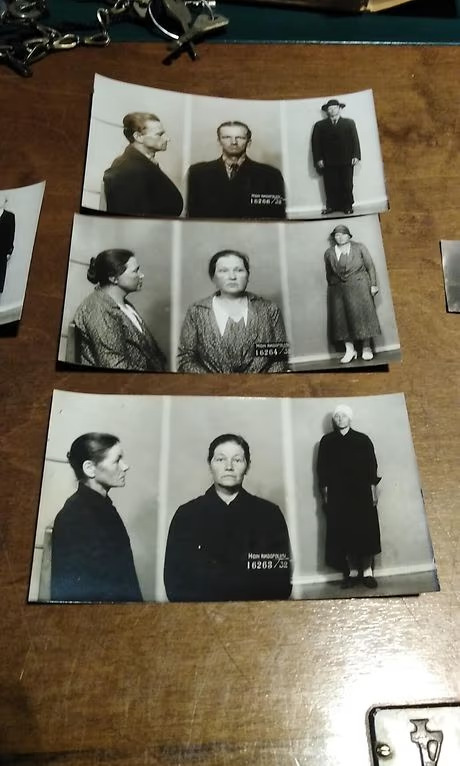
Elokuun 19. päivänä vuonna 1930 tavallinen koulumatka muuttui painajaiseksi. Malmilla, silloisessa Helsingin maalaiskunnassa, 14-vuotias koulupoika löysi Tattarisuon lähteestä irtileikatun naisen käden. Poliisi hämmästyi löydöstä, mutta ilman lisätodisteita tapaus vaipui nopeasti unholaan. Vuotta myöhemmin, syyskuun 18. päivänä 1931, sama lähde paljasti synkän salaisuutensa: useita irti leikattuja käsiä, jalkoja, sormia, hiuksia – ja pään. Nyt ei ollut enää epäilystäkään, että jotain kammottavaa oli tekeillä. Tiedotusvälineet tarttuivat tapaukseen, ja koko maa pidätti hengitystään. Helsingin yössä liikkui pahuutta.Poliisin tutkimukset harhailivat pimeässä. Epäilyksen kohteeksi joutuivat monet, joiden ei olisi koskaan pitänyt olla epäiltyinä. Harjun ruumishuoneen vahtimestari, esoteerisen Ruusu-Risti -järjestön johtaja Pekka Ervast ja jopa vapaamuurarit joutuivat skandaalin keskiöön. Everstiluutnantti Paavo Susitaipale syytti äänekkäästi vapaamuurareita ja muita salaseuroja, ja seurauksena vapaamuurarit suljettiin Upseeriliitosta – vaikka syyttömyys lopulta todistettiin. Tutkinta sai lopulta käänteen, kun selvisi, että tekojen taustalla oli pieni, mustaa magiaa harjoittanut ryhmä. He olivat kaivaneet ruumiinosia Malmin hautausmaan avoimista joukkohaudoista – niin kutsutuista linjahaudoista – ja käyttäneet niitä rituaaleissaan Tattarisuon lähteellä. Ryhmän tarkoituksena oli päästä yhteyteen henkimaailman kanssa ja saada yliluonnollista apua muun muassa sairauksien parantamiseen ja kadonneen omaisuuden palauttamiseen. Ryhmä ei ollut tuntematon paikallisille. Johtohahmoksi paljastui ”Noita-Kalliona” tunnettu ajomies Vilho Kallio, joka uskoi Tattarisuon lähteen veden saavan parantavia voimia siellä säilytetyistä ruumiinosista. Mukana olivat myös satamatyömies Ville Edvard Saari ja mystiikkaan syvästi uskova Johan Ilmari Hedman, jonka äiti toivoi saavansa oikeudessa poikansa tunnustetuksi edesmenneen tohtori Parviaisen aviottomaksi lapseksi – ja näin osalliseksi miljoonaperinnöstä. Edes sylttytehdas ei säästynyt epäilyiltä. Ajan Sana -lehti otsikoi näyttävästi: "Tattarisuon arvoitus selviää – jäljet johtavat sylttytehtaaseen." Vaikka epäilyt osoittautuivat perättömiksi ja lehti sai sakot, syntyi sanonta, joka elää yhä: "Jäljet johtavat sylttytehtaaseen."Silpomisten taustalla oli yllättävä hahmo: ompelijatar Ida Widen, joka väitti saavansa ohjeita näkyjen ja seinään ilmestyvien kirjaimien kautta. Hän luki "salaisia viestejä", jotka opastivat, miten ruumiinosat tulisi leikata. Widenin ja Kallion kerrotaan myös rukoilleen Mustan Raamatun ohjeiden mukaisesti Malmin ja Lapinlahden hautausmailla – toivoen henkien paljastavan heille salaisuuksia kadonneista rahoista ja oikeuden menestyksestä. Tattarisuon synkkä saaga huipentui syyskuussa 1932, kun Helsingin pitäjän kihlakunnanoikeus antoi tuomionsa. Noita-Kallio sai 2 vuoden 4 kuukauden vankeustuomion, Ville E. Saari 3 vuotta, ja Ida Widen tuomittiin 3 vuodeksi yllytyksestä ruumiinsilpomiseen ja väärästä ilmiannosta. Oikeus totesi, ettei heidän tekonsa olleet murhia – vaan pyhäinhäväistykseen kääntyneitä taikayrityksiä. Tapaus sai laajaa huomiota myös kirjallisuudessa. Jännityskirjailija Aarne Haapakosken esikoisteos Mustalais-suon arvoitus ilmestyi jo samana vuonna 1931. Vuonna 2015 Aki Ollikainen käsitteli tapahtumia romaanissaan Musta satu. Kansatieteilijä Vilho Rikkonen puolestaan julkaisi tutkielman "Vainajainpalvontataikoja tunnettujen kauhutapausten johdosta", käsitellen Tattarisuon tapausta esimerkkinä taikauskon voimasta.

3 notes
·
View notes
Text
What do you do when you're pushing 40 and worried you might not be able to conceive naturally?
Helsingin Sanomat hears from a 39-year-old woman who admits she lied to get into the publicly funded infertility treatment queue.
The rules call for couples trying to conceive for at least a year before contacting health services, but waits can be long, and the cutoff is at age 40.
Instead of waiting, the woman got in the queue almost immediately after her partner agreed to have a child. They had not been trying for a year, but just a few months.
Studies in Finland frequently show that people in their 30s put off starting families because of life's uncertainties, like the lack of stable employment.
The hopeful mother said that, despite holding a university degree, securing a permanent position has proven to be difficult. She now works in a specialist role under a zero-hour contract. While her situation is far from ideal, she told HS that starting a family is something she can't postpone any longer.
Outdated offices
Conventional wisdom long held that offices were essential for working, and companies competed for premium office space. But the pandemic upended this thinking.
Today, many newly built office buildings stand empty and may never be used, according to Hufvudstadsbladet.
Premium locations in downtown city centres are still attractive, but the gap between them and less desirable areas is widening, according to Aarne Mustakallio, head of research at real estate company JLL.
Mustakallio said Finland has far more outdated office space than the European average. He estimates that over 40 percent of the offices in the Helsinki area don’t really meet today's standards anymore.
He points out that there are already plenty of office areas in the capital region. Instead of building new ones, he said he believes the focus should be on improving what's already there, since there isn't enough demand to justify creating completely new office districts.
Power up
Spot electricity prices are surging on Tuesday after days of near-zero rates, reports Kauppalehti, citing data from the Nordic power exchange Nordpool.
Between 8am and 10 am, the price will rise to 12.5 cents per kilowatt-hour. The most expensive hour of the day will be in the evening, between 8pm and 9pm, when the price will hit 25 cents per kilowatt-hour.
The increase is significant compared to Monday, when the highest price was just 0.6 cents per kilowatt-hour.
Over the past 12 months, the average spot price has been 4.78 cents per kilowatt-hour.
2 notes
·
View notes
Text




I found an outsider artist Robert Adale Davis on a friend Aarne Anton's online gallery page.
Robert Adale Davis creates clothes with string, yarn and applied patched. He obsessively stitches and layers them to “create symbols, faces and patterns on deconstructed clothing, head pieces, patches, tapestries and mandalas.”
Elegant and beautifully designed, they are true works of art.
Aarne Anton has been a passionate dealer, and collector of art and antiques for over 45 years. For most of that time heading American Primitive Gallery in NYC.



With the onset of Covid the gallery in the city closed and was reinvented online and continued exhibiting at shows such as the Outsider Art Fair under its new name - Nexus Singularity.
28 notes
·
View notes
